
Xtreme Raptor Day 2021 at Schlitz Audubon Nature Center
November 15, 2021 | Topics: Events
By Eddee Daniel
It was my granddaughter Lynn’s first Xtreme Raptor Day. We made sure to walk the entire tour route to visit with all of the raptors on display. Afterward, when we asked Lynn which she liked the best she didn’t hesitate: the eagle! No surprise. Meet Valkyrie (above and below), one of two resident bald eagles at Schlitz Audubon, and an imposing figure even when standing at rest. When she spreads her wings, however, she becomes truly magnificent.
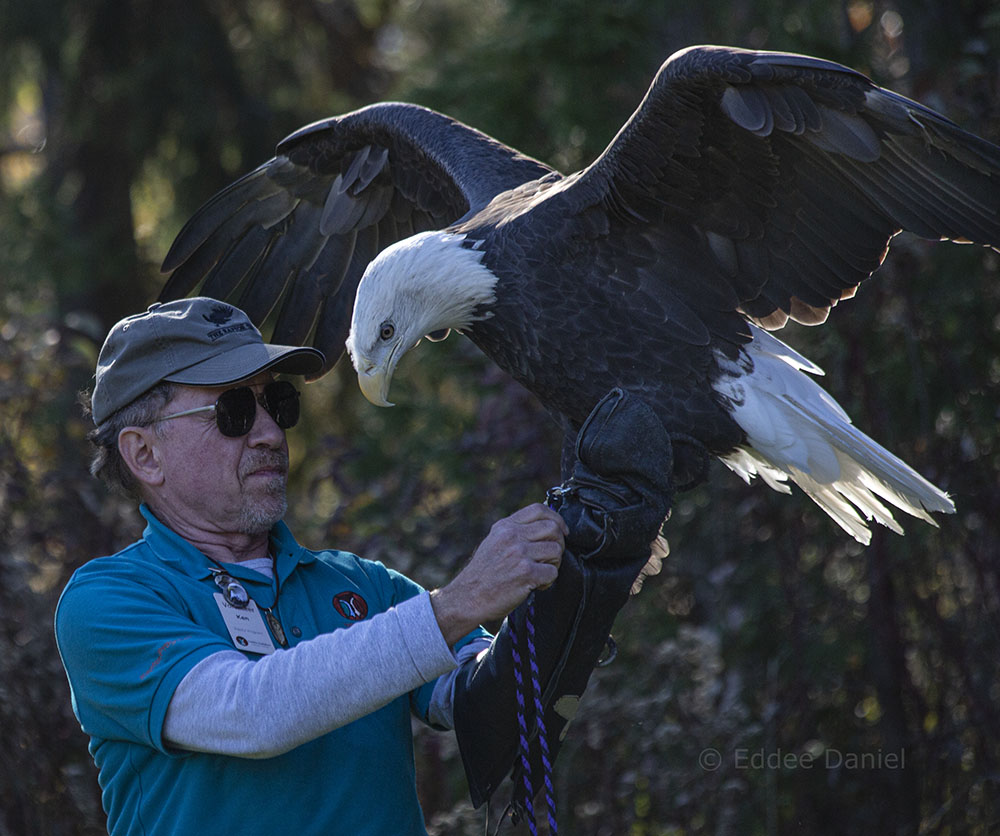
Like all of the resident birds, Valkyrie was brought to the center to live after circumstances made it impossible for them to continue in the wild. In Valkyrie’s case, she was left on her own before she acquired the hunting skills necessary to survive. When people fed her she quickly associated humans with food. As a consequence, she posed a danger to people and herself and so the center took her in.
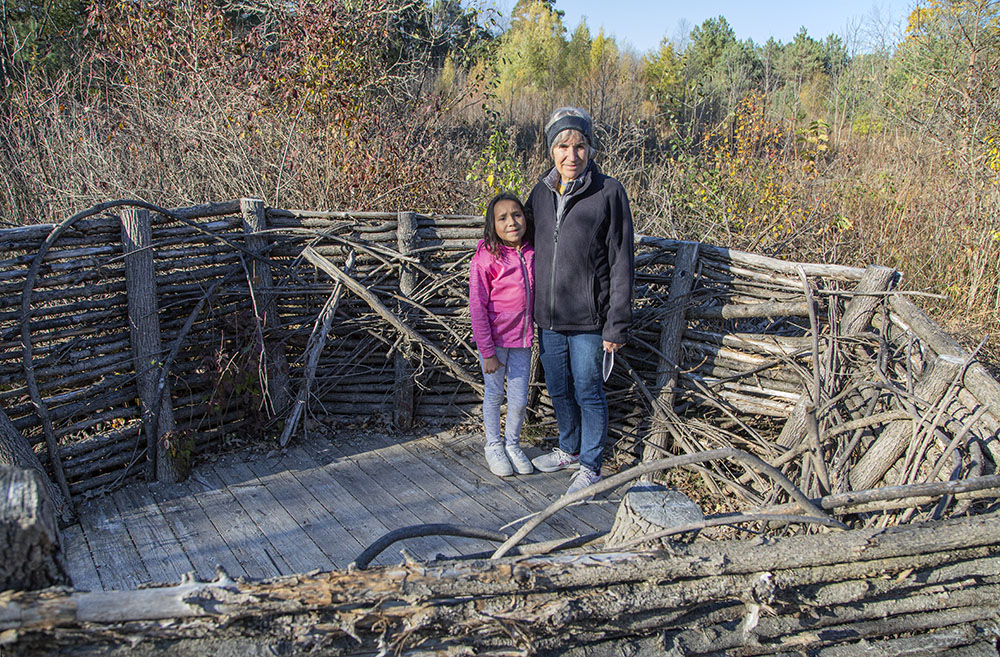
The size of the bird itself isn’t the only impressive thing about an eagle. Along the trail there is a structure built by volunteers that resembles an eagle’s nest so that we can get a feel for its gargantuan stature. What’s even more astounding is the fact that these massive nests often are built on the tops of trees! Here we see Lynn with her grandmother, also Lynn, modeling in the nest for scale.

No, this owl is not winking for the camera. This is Baron von Screech, an eastern screech owl. The Baron, as he is known, lost his right eye due to a collision with a car. The eye, which was damaged, had to be removed to maintain his health. By closing one of our eyes, we humans, who see binocularly like owls do, can imagine how much of an impairment that would be in the wild. But to compound the problem, an owl’s eye is not spherical like ours is. The Baron’s eye looks very round, but in fact it is more like a circular tube than a sphere. Owls have to rotate their heads to see from side to side because they can’t roll their eyes.
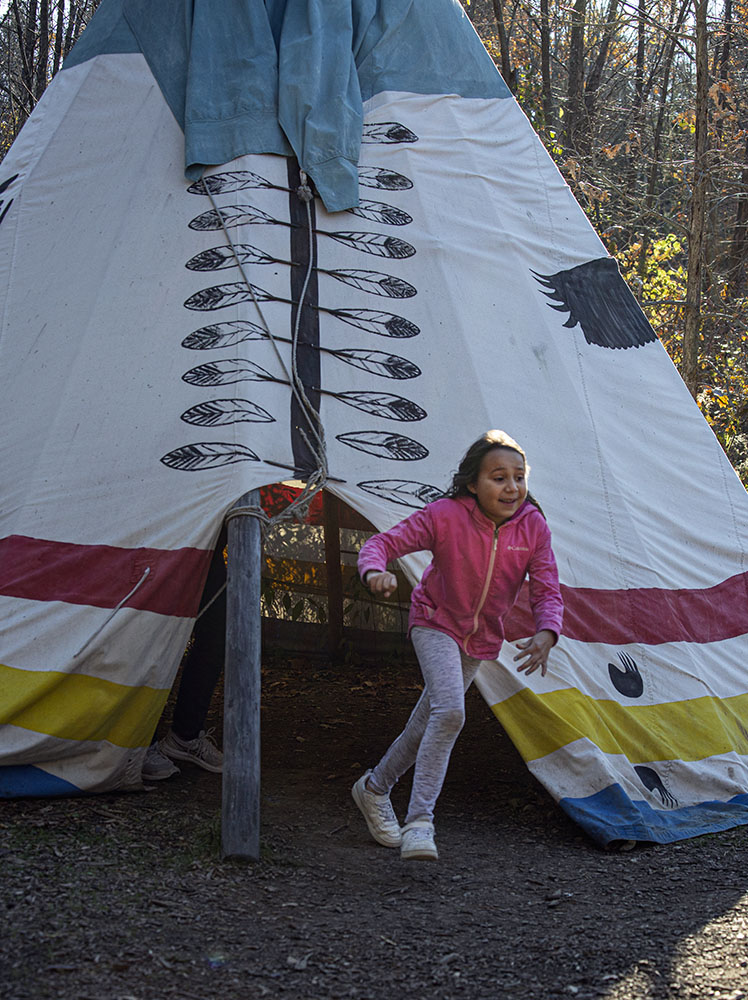
The birds were not the only attractions. The two Lynns ducked inside to explore this teepee, which is emblazoned on its side with an eagle with outstretched wings.
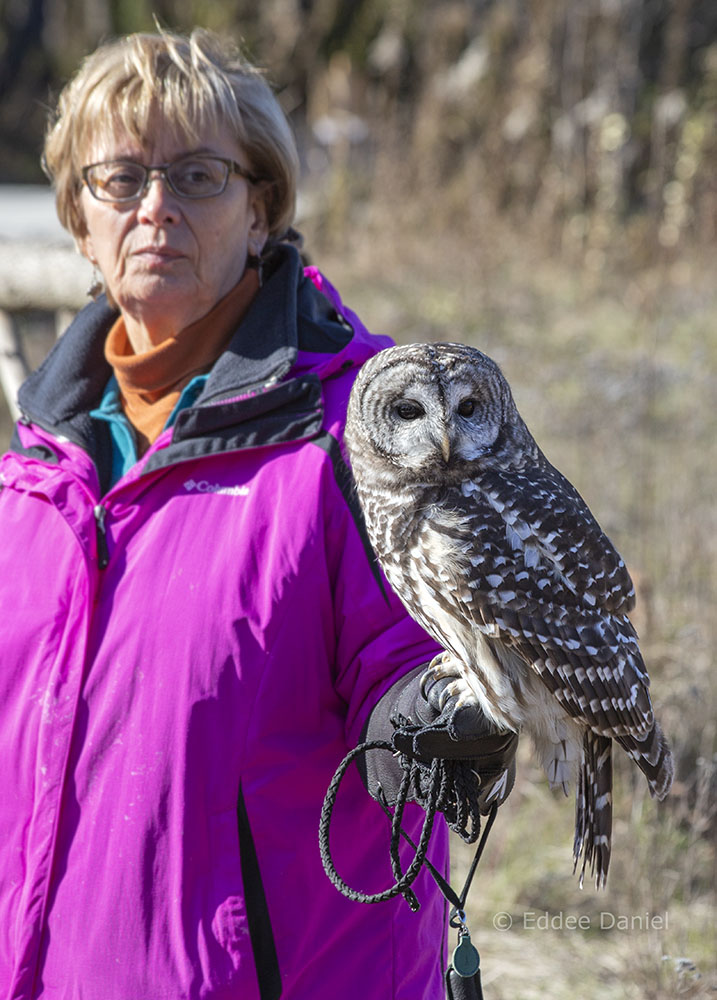
Another owl on the tour was Perseus. He is a barred owl, a common species in Wisconsin but one seldom seen due to superlative camouflage. Perseus fell from his nest in a busy park at a very young age. People passing by picked him up, petted, and interacted with him. As a result of this exposure he became imprinted, which means he is attracted and attached to humans instead of his own species and would not survive in the wild.

This little beauty is Nicco, a broad-winged hawk. Nicco was found on the side of a road, most likely hit by a car, having suffered multiple broken bones. The name translates to “victory of the people,” a testament to his resiliency after surviving the collision.
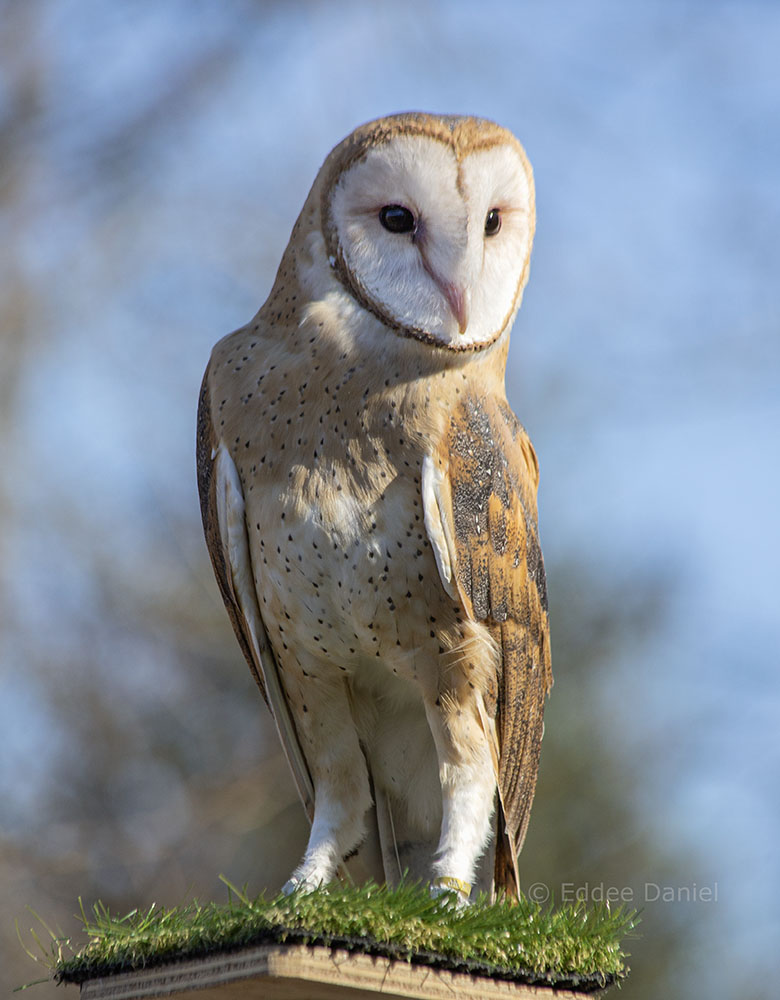
One of the highlights of Xtreme Raptor Day is the flight demonstration held in the center’s outdoor amphitheater. Here is Athena the barn owl. The disk shape of her face acts like radio antenna, focusing sound waves. Lindsay Obermeier, Raptor Program Director, explained that Athena can hear a mouse’s heartbeat in the grass as far as 90 feet away. Presumably that’s when there isn’t an amphitheater full of noisy humans distracting her. Athena, who is still being trained, dutifully flew back and forth once from post to post onstage before deciding she’d had enough and returned to the security of her box.
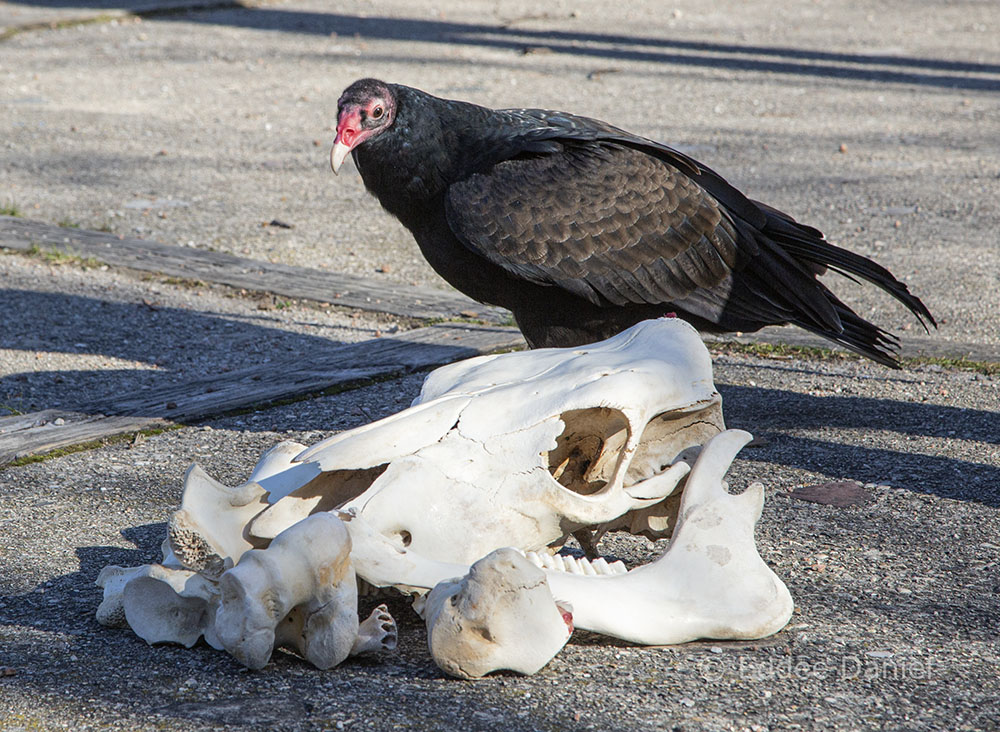
Tallulah the turkey vulture was more accommodating. After posing for a photo op with skulls and bones—stand-ins for the carrion that makes up a vulture’s diet—she gave a crowd-pleasing performance, flying from the top of the amphitheater to the stage, swooping down low over the audience’s heads. Tallulah is one of two non-raptors in residence at the center. Like Perseus, Tallulah was imprinted on humans. How would you like having a vulture following you around everywhere you go?

Athena has super hearing but Tallulah’s super sense is smell. Vultures, which have one of the best noses in the animal kingdom, have been known to smell a food source from up to a mile away. I’m glad I can’t smell dead animals from that far!
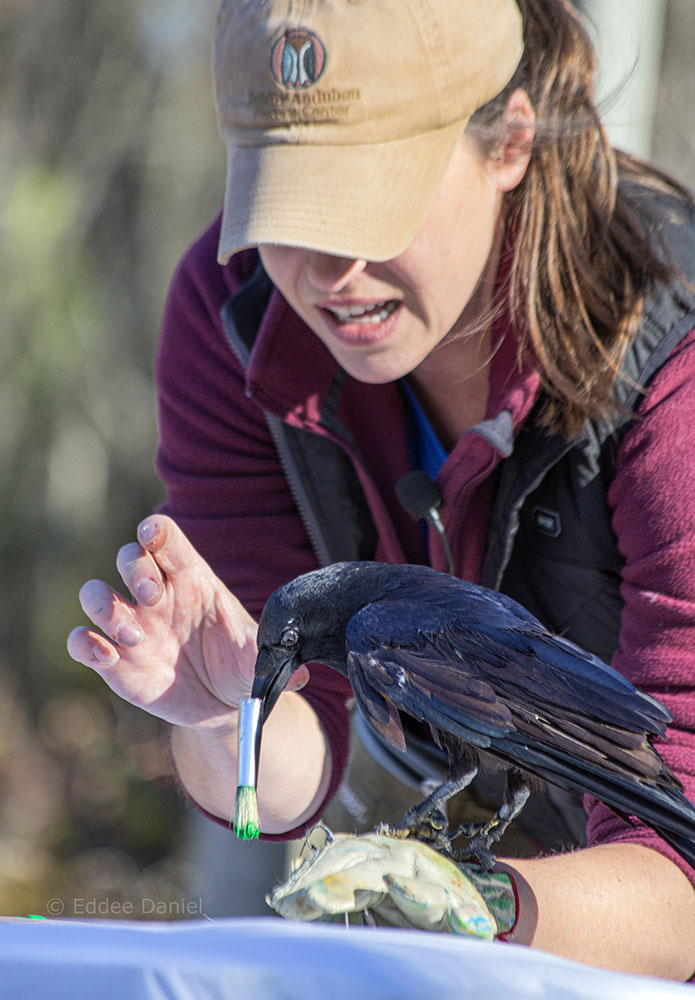
The other non-raptor is Loki, an American crow, whose unusual skill is abstract painting. Not a common crow characteristic—although, as Lindsay pointed out, crows are among the smartest creatures in the animal kingdom. Stubborn on occasion, however. Here we see Lindsay trying valiantly to persuade a reluctant Loki to paint. I’ve seen Loki perform in the past, to much applause, but this year he wasn’t in the mood.
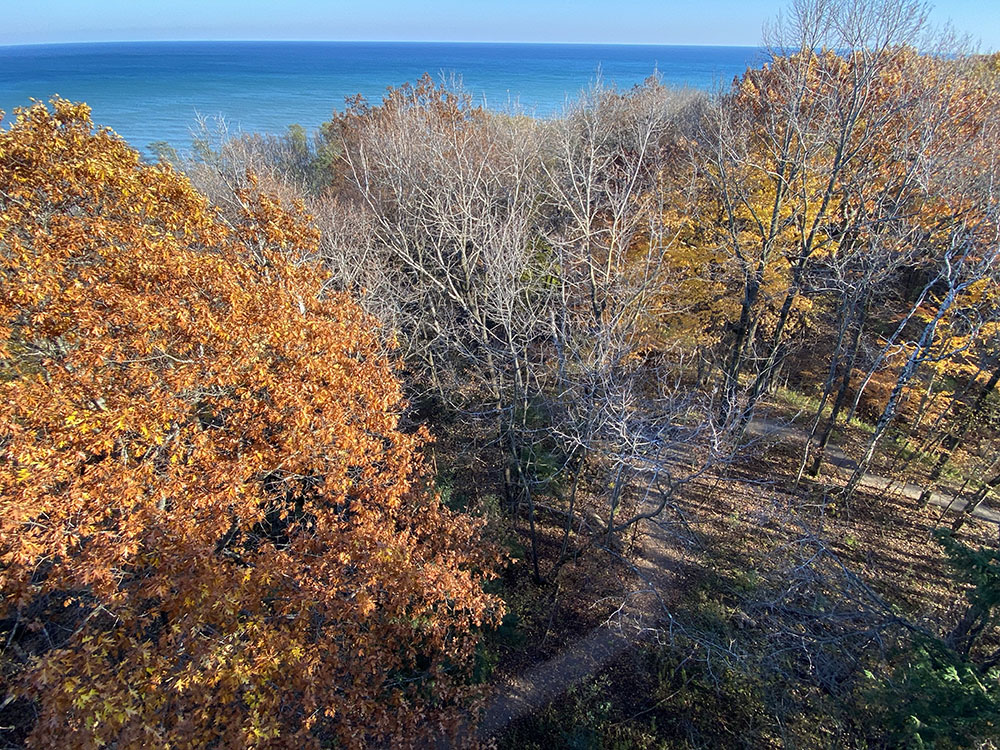
We didn’t leave immediately after the program, wanting to milk the enjoyment of what might prove to be the last unseasonably warm autumn day. No visit to Schlitz Audubon is complete without climbing the tower—at least that’s what one of the Lynns and I thought. The other Lynn chose to remain on terra firma.

After Lynn had run up and down the 60-foot tall tower several times, we headed down the bluff to the beach where we found it easy to get away from the crowd.

We also, on the way back up, found…
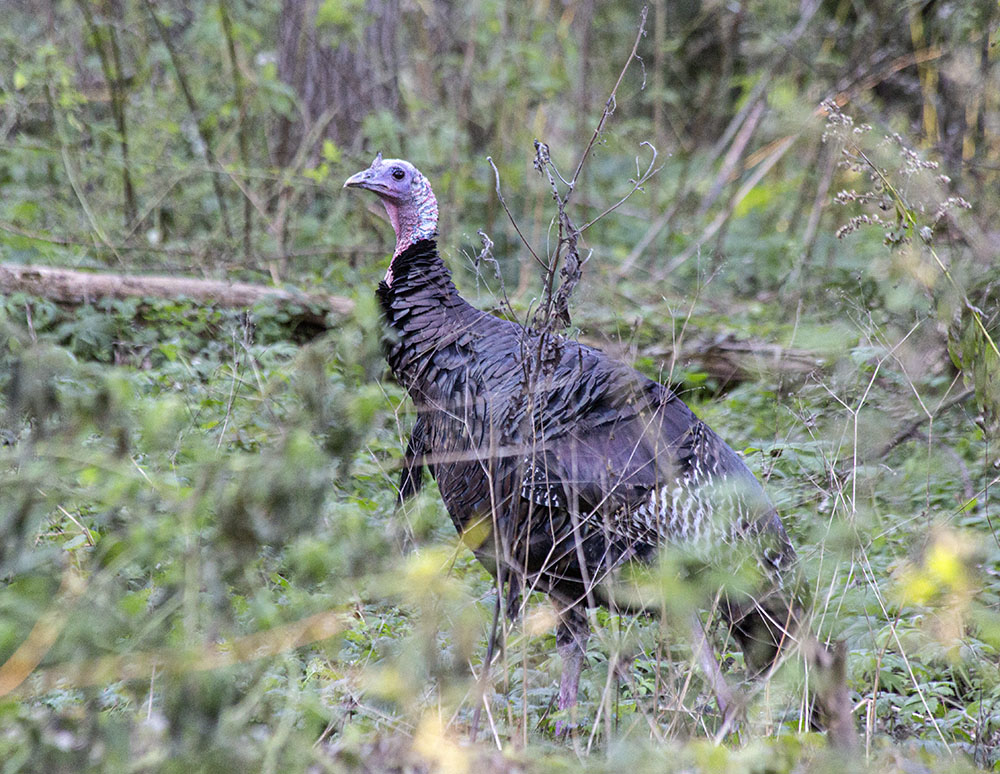
The rescued raptors are not the only large avian creatures on the Schlitz Audubon property. In fact, the largest (by weight) may be the wild ones roaming around freely. While Valkyrie, with her enormous wingspan, is undoubtedly supreme, she weighs a mere 12 pounds. The average wild turkey, on the other hand, weighs around 18 and they can get much bigger than that! I chased this guy around for quite a while trying to get a good shot before I discovered…
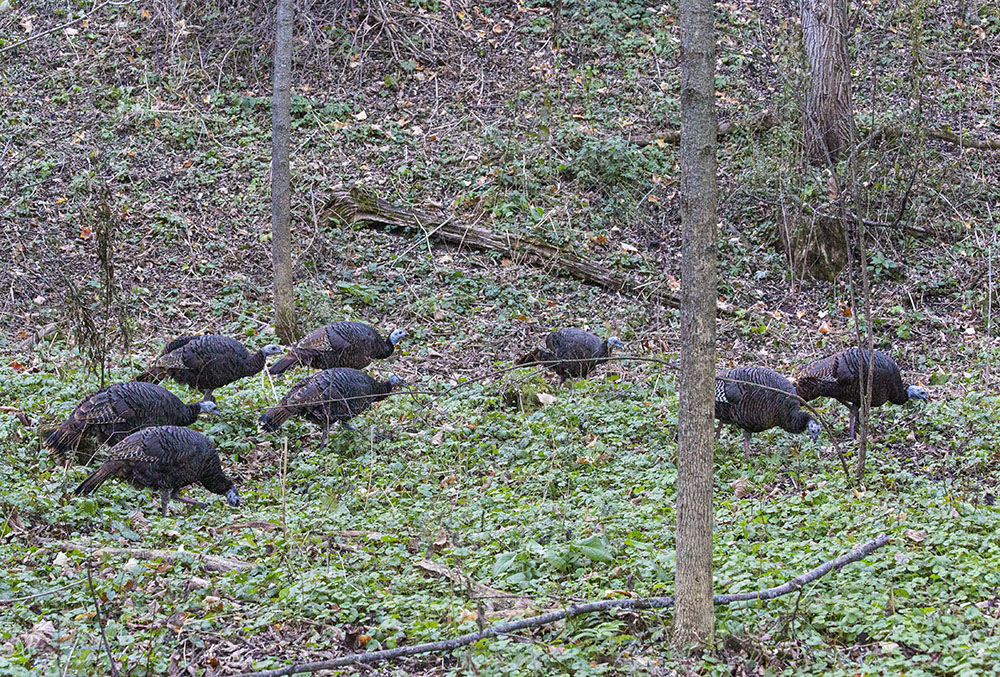
We enjoyed seeing this flock saunter through the underbrush.
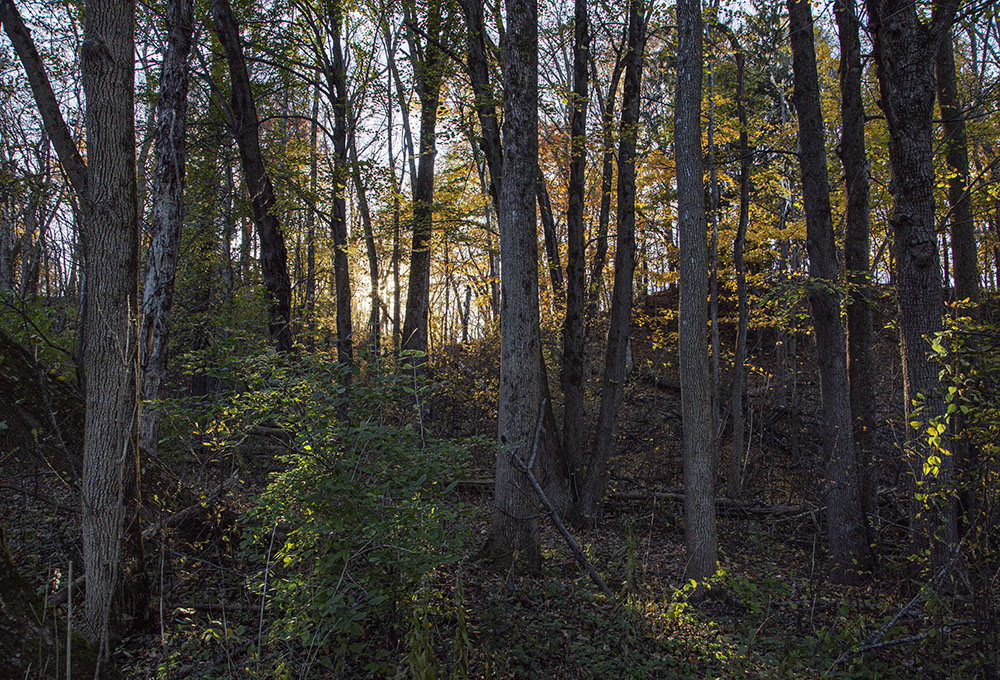
The sun was sinking over the bluff when we finally decided to call it a day.
When I thanked Raptor Program Director Lindsay Obermeier in an email later, she wrote me back with this information:
“The Raptor Program at Schlitz Audubon Nature Center is home to non-releasable birds who act as educators throughout the community. We currently care for 14 birds including bald eagles, falcons, owls, hawks and others. Our annual fundraising event ‘Xtreme Raptor Day,’ now in its 13th year, is a celebration of these cunning hunters of the sky. Families engaged in interactive, educational activities, met all of the program birds up close, and learned more about how we can help wildlife. The proceeds from the event go directly back to the Program, helping us provide the highest care possible to these amazing birds as they work to inspire environmental stewardship throughout the community.
“600 people attended this year in total: 300 in the morning and 300 in the afternoon. We’ve redesigned the structure of the event due to the pandemic, and the capacity limits ensure safety of our visitors. Visitors had to pre-purchase tickets and we sold out a week before the event.”
Related story from Xtreme Raptor Day 2018: Raptors get top billing at Schlitz Audubon Nature Center.
You can read much more about the birds in this story and all 14 avian residents of Schlitz Audubon Nature Center on their website. There also is a Schlitz Audubon Nature Center page on our website.
Credit goes to the Schlitz Audubon Nature Center website for most of the factual information in this story. Used with permission. Schlitz Audubon Nature Center is a project partner of A Wealth of Nature. All photos by Eddee Daniel, a board member of Preserve Our Parks.

